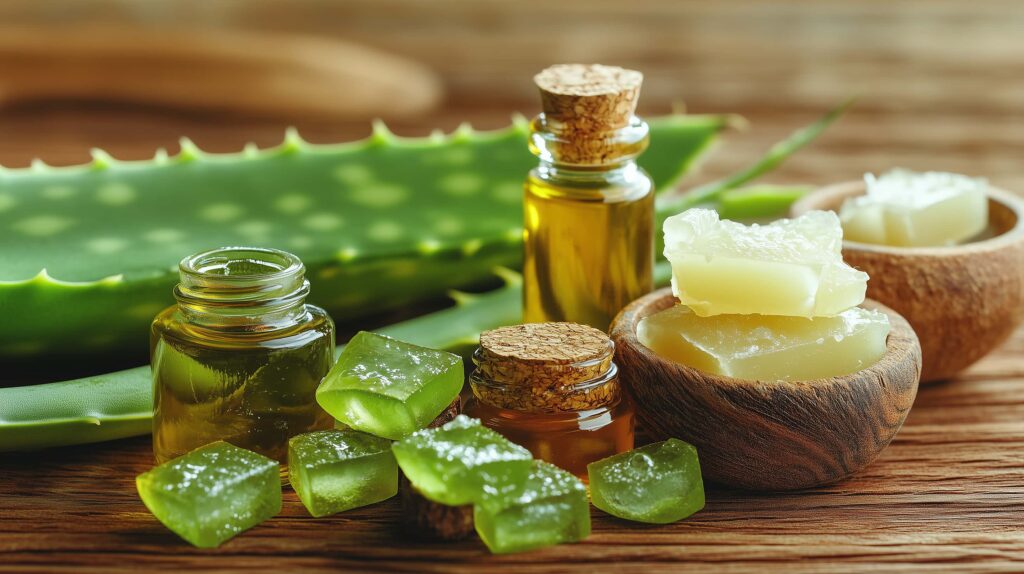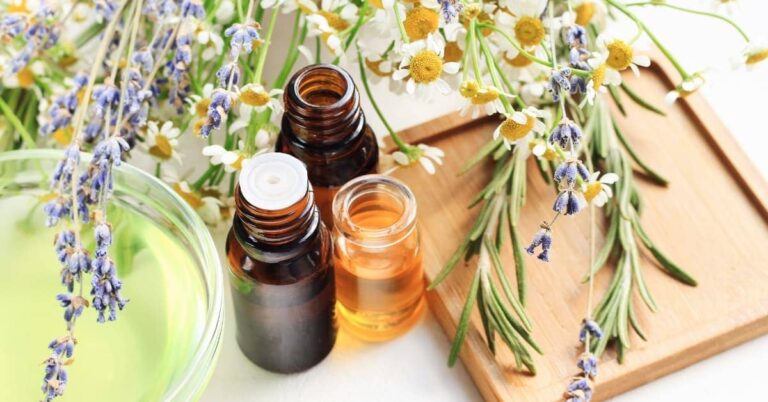Dry Skin SOS: From Flaking to Firmness
Dry skin can be a persistent and frustrating issue, leaving you feeling uncomfortable and self-conscious. Whether it’s the harsh winter air, indoor heating, or your skincare routine itself, dry skin can lead to flakiness, itchiness, and a lack of firmness that makes your complexion look dull and lifeless. But fear not—there are natural, effective solutions that can transform your skin from flaky to firm, restoring its health and vitality. In this guide, we’ll explore the causes of dry skin, the benefits of natural moisturizers, and practical steps you can take to achieve a smoother, more resilient complexion.

Understanding Dry Skin: Causes and Symptoms
Before diving into solutions, it’s essential to understand what causes dry skin and how to recognize its symptoms. Dry skin, or xerosis, occurs when the skin loses too much moisture or fails to retain adequate hydration. Several factors contribute to this condition:

Environmental Factors
- Weather: Cold, windy weather can strip the skin of its natural oils, leading to dryness. Similarly, low humidity levels, whether outdoors or from indoor heating, reduce the skin’s ability to stay hydrated.
- Sun Exposure: Excessive exposure to the sun can damage the skin’s barrier, increasing moisture loss and leading to dryness.

Skincare Habits
- Harsh Cleansers: Using soaps or cleansers that contain sulfates and alcohol can strip the skin of its natural oils, exacerbating dryness.
- Over-Exfoliating: While exfoliation can help remove dead skin cells, doing it too frequently or using abrasive products can damage the skin barrier, causing irritation and dryness.
Underlying Health Conditions
- Eczema and Psoriasis: These chronic skin conditions are often associated with dry, flaky patches.
- Dehydration: Not drinking enough water can impact your skin’s hydration levels, making it appear dry and dull.
Common Symptoms of Dry Skin
- Flakiness: Visible dry patches or scales on the skin’s surface.
- Itchiness: Persistent itching can be both uncomfortable and a sign of dryness.
- Tightness: A feeling of tightness or discomfort, especially after cleansing.
- Dullness: Lack of radiance and a lifeless appearance due to decreased moisture levels.
- Cracks or Fissures: In severe cases, dry skin can lead to cracks that may bleed or become infected.
Recognizing these symptoms is the first step toward addressing dry skin effectively. Understanding the underlying causes can help you tailor your skincare routine to restore moisture and improve skin health.

Key Benefits of Natural Moisturizers
When it comes to combating dry skin, natural moisturizers offer a gentle yet powerful solution. Unlike synthetic products that can sometimes irritate sensitive skin, natural moisturizers harness the power of plant-based ingredients to nourish and hydrate. Here are some key benefits:
Rich in Essential Nutrients
Natural moisturizers are packed with vitamins, minerals, and fatty acids that are crucial for maintaining healthy skin. For example:
- Hyaluronic Acid: Naturally found in the skin, it helps retain moisture and plump up the skin, reducing the appearance of fine lines.
- Shea Butter: Contains vitamins A and E, which help repair and protect the skin barrier while providing deep hydration.
- Aloe Vera: Known for its soothing properties, it helps calm irritated skin and provides lightweight moisture.
Gentle and Non-Irritating
Natural ingredients are less likely to cause irritation or allergic reactions compared to some synthetic alternatives. This makes them ideal for individuals with sensitive skin or those prone to conditions like eczema and psoriasis.
Promotes Long-Term Skin Health
By using natural moisturizers, you’re not just addressing immediate dryness but also supporting the skin’s long-term health. Ingredients like antioxidants protect the skin from environmental stressors, while essential oils can promote skin regeneration and elasticity.
Environmentally Friendly
Natural moisturizers are often more sustainable and environmentally friendly. They typically use biodegradable ingredients and eco-friendly packaging, reducing the overall environmental impact.
Versatility
Natural moisturizers can be tailored to suit different skin types and concerns. Whether you have oily, dry, combination, or sensitive skin, there’s a natural product that can meet your specific needs without causing imbalance or irritation.
Incorporating natural moisturizers into your skincare routine can provide comprehensive benefits, ensuring your skin remains hydrated, healthy, and resilient against dryness.

Step-by-Step Moisturizing Routine
Implementing a consistent moisturizing routine is crucial for managing dry skin effectively. Here’s a simple, actionable guide to help you incorporate natural moisturizers into your daily skincare regimen:
1. Cleanse Gently
Start by washing your face with a gentle, hydrating cleanser that doesn’t strip your skin of its natural oils. Look for products with natural ingredients like aloe vera or chamomile to soothe and cleanse without causing dryness.
2. Exfoliate Sparingly
Exfoliate your skin 1-2 times a week to remove dead skin cells and promote cell turnover. Use a mild exfoliant with natural exfoliants like oatmeal or jojoba beads to prevent irritation and maintain the skin barrier.
3. Apply Toner
Use a hydrating toner to balance your skin’s pH levels and prepare it for better absorption of moisturizers. Opt for alcohol-free toners with ingredients like rose water or witch hazel to provide additional hydration and soothing benefits.
4. Serum Application
Before moisturizing, apply a hydrating serum enriched with hyaluronic acid or vitamin E. Serums penetrate deeper into the skin, delivering concentrated nutrients that enhance moisture retention and improve skin texture.
5. Moisturize Generously
Choose a natural moisturizer that suits your skin type. For dry skin, opt for richer formulas containing shea butter, coconut oil, or almond oil. Gently massage the moisturizer into your skin using upward, circular motions to ensure even distribution and absorption.
6. Eye Cream
Don’t forget the delicate skin around your eyes. Use a natural eye cream with ingredients like cucumber extract or green tea to hydrate and reduce puffiness without causing irritation.
7. Protect with Sunscreen
During the day, apply a natural, broad-spectrum sunscreen to protect your skin from harmful UV rays. Look for mineral-based sunscreens with zinc oxide or titanium dioxide for effective protection without clogging pores.
8. Nighttime Care
At night, consider using a richer moisturizer or a natural overnight mask to provide intense hydration while you sleep. Ingredients like argan oil or jojoba oil can help repair and replenish your skin’s moisture levels overnight.
Tips for Success
- Consistency is Key: Stick to your moisturizing routine daily to see long-term improvements in your skin’s hydration and firmness.
- Adjust Seasonally: Modify your routine based on seasonal changes. For example, use heavier moisturizers in winter and lighter ones in summer to match your skin’s needs.
- Patch Test New Products: Always perform a patch test when introducing new products to ensure they don’t cause irritation or allergic reactions.
By following this step-by-step routine, you can effectively manage dry skin, enhancing its firmness and overall health through the power of natural moisturizers.

Common Mistakes to Avoid with Dry Skin Care
Even with the best intentions, it’s easy to make mistakes that can exacerbate dry skin. Here are some common pitfalls and how to avoid them:
1. Over-Cleansing
Mistake: Washing your face too frequently or using harsh cleansers can strip the skin of its natural oils, leading to increased dryness. Solution: Limit cleansing to twice a day—morning and night—and choose gentle, hydrating cleansers that maintain the skin’s moisture barrier.
2. Skipping Moisturizer
Mistake: Neglecting to moisturize after cleansing can leave your skin dehydrated and more prone to flaking. Solution: Always apply a natural moisturizer immediately after cleansing to lock in moisture and keep your skin hydrated throughout the day.
3. Using Hot Water
Mistake: Washing your face with hot water can strip away natural oils and cause the skin to lose moisture. Solution: Use lukewarm water when cleansing your face to prevent moisture loss and maintain the skin’s natural balance.
4. Over-Exfoliating
Mistake: Exfoliating too often or using abrasive products can damage the skin barrier, leading to irritation and dryness. Solution: Limit exfoliation to 1-2 times a week and opt for gentle exfoliants with natural ingredients to remove dead skin cells without causing harm.
5. Ignoring Sunscreen
Mistake: Failing to protect your skin from UV rays can worsen dryness and lead to premature aging. Solution: Apply a natural, broad-spectrum sunscreen daily, even on cloudy days, to shield your skin from harmful UV radiation and prevent moisture loss.
6. Using Alcohol-Based Products
Mistake: Products containing alcohol can dry out the skin by removing essential oils. Solution: Choose alcohol-free skincare products that hydrate and nourish the skin without causing dryness or irritation.
7. Not Hydrating Internally
Mistake: Relying solely on topical products without maintaining adequate hydration can limit your skin’s ability to retain moisture. Solution: Drink plenty of water throughout the day to support your skin’s hydration from within, enhancing the effectiveness of your moisturizing routine.
8. Ignoring Diet and Nutrition
Mistake: A diet lacking essential nutrients can affect your skin’s health and hydration levels. Solution: Incorporate a balanced diet rich in vitamins, minerals, and healthy fats to support your skin’s natural moisture and resilience.
9. Using Incompatible Products
Mistake: Combining products with conflicting ingredients can irritate the skin and disrupt its moisture balance. Solution: Select skincare products with complementary ingredients and avoid using multiple products that may counteract each other. Simplify your routine to ensure compatibility and effectiveness.
10. Not Listening to Your Skin
Mistake: Ignoring signs of irritation or discomfort can lead to worsening dryness and other skin issues. Solution: Pay attention to how your skin responds to different products and routines. If you experience increased dryness or irritation, adjust your skincare regimen accordingly.
By being aware of these common mistakes and taking proactive steps to avoid them, you can enhance the effectiveness of your dry skin care routine and achieve firmer, healthier skin.
Setting Realistic Expectations and Timelines
One of the most important aspects of managing dry skin is setting realistic expectations regarding the timeline for seeing results. Skin health is a gradual process, and patience is essential for achieving lasting improvements.
Understanding the Healing Process
- Skin Cell Turnover: The skin undergoes a natural cycle of cell turnover, typically every 28 days. This means that significant changes in skin texture and hydration can take several weeks to become noticeable.
- Barrier Repair: Restoring the skin’s natural barrier function, which protects against moisture loss and external irritants, is a gradual process that requires consistent care.
Expected Timeline for Improvements
- Immediate Effects: Many natural moisturizers provide instant hydration, making your skin feel softer and more supple shortly after application.
- Short-Term Results (2-4 Weeks): With regular use, you may begin to notice reduced flakiness, improved texture, and increased firmness as your skin retains moisture more effectively.
- Long-Term Benefits (2-3 Months): Continued use of natural moisturizers can lead to lasting improvements in skin elasticity, reduced irritation, and a more radiant complexion as the skin’s barrier continues to strengthen.
Encouraging Patience and Consistency
- Daily Routine: Adhering to a consistent moisturizing routine is crucial for achieving and maintaining healthy skin. Skipping days or frequently changing products can hinder progress.
- Monitoring Progress: Keep track of your skin’s condition over time. Take photos or notes to observe changes and identify which products or practices are most effective.
- Adjusting as Needed: As your skin improves, you may need to adjust your routine to maintain hydration levels. This could involve incorporating new products or modifying application techniques based on your skin’s evolving needs.
Overcoming Frustration
It’s natural to feel impatient when dealing with persistent dry skin, but understanding that skin health takes time can help you stay motivated. Celebrate small victories along the way and remember that consistent care will yield the best results.
Staying Positive
Maintaining a positive mindset can enhance your skincare journey. Focus on the improvements you’re making and the steps you’re taking toward healthier skin, rather than expecting overnight miracles.
By setting realistic expectations and committing to a consistent routine, you’ll be better equipped to achieve firm, hydrated skin that radiates health and vitality.

Tailoring Solutions for Different Skin Types
Dry skin can present differently depending on your overall skin type. Tailoring your moisturizing routine to suit your specific needs ensures that you address dryness effectively without causing imbalance or irritation. Here’s how to customize your approach based on different skin types:
1. Oily Skin with Dry Patches
Even if you generally have oily skin, you might experience dry patches or flakiness in certain areas. To manage this:
- Lightweight Moisturizers: Use oil-free or non-comedogenic moisturizers that hydrate without adding excess oil.
- Targeted Hydration: Apply richer, natural oils like jojoba or rosehip oil specifically to the dry areas, avoiding the oily zones.
2. Combination Skin
Combination skin can be both oily and dry in different areas. To balance this:
- Dual-Action Products: Choose moisturizers that offer both hydration and oil control, such as those containing hyaluronic acid and niacinamide.
- Layering Techniques: Apply a lightweight moisturizer on oily areas and a richer one on dry zones to provide appropriate hydration where needed.
3. Sensitive Skin
Sensitive skin is prone to irritation and redness, making it crucial to choose gentle, soothing moisturizers:
- Fragrance-Free Products: Opt for moisturizers without added fragrances or harsh chemicals that can trigger sensitivity.
- Soothing Ingredients: Look for ingredients like aloe vera, chamomile, and calendula to calm and hydrate the skin without causing irritation.
4. Mature Skin
As skin ages, it tends to lose elasticity and moisture more rapidly. To address these concerns:
- Rich, Nutrient-Dense Moisturizers: Use products containing ingredients like hyaluronic acid, peptides, and antioxidants to enhance hydration and promote firmness.
- Firming Agents: Incorporate moisturizers with natural firming agents such as shea butter and argan oil to improve skin elasticity and reduce the appearance of fine lines.
5. Acne-Prone Skin
For those with acne-prone skin, maintaining hydration without clogging pores is essential:
- Non-Comedogenic Moisturizers: Choose oil-free, non-comedogenic products that provide moisture without exacerbating acne.
- Lightweight Formulas: Opt for gel-based or water-based moisturizers enriched with ingredients like tea tree oil or salicylic acid to help manage acne while keeping the skin hydrated.
6. Dry and Acne-Prone Skin
Balancing dryness with acne management can be challenging. Here’s how to address both:
- Hydrating Yet Lightweight: Use moisturizers that offer deep hydration with lightweight, non-greasy formulations. Ingredients like hyaluronic acid and glycerin can provide moisture without clogging pores.
- Spot Treatment: Apply richer natural oils like jojoba oil or marula oil to dry areas while using oil-free moisturizers on acne-prone zones.
Customizing Your Routine
- Patch Testing: Always perform a patch test when introducing new products to ensure they suit your skin type without causing adverse reactions.
- Layering Products: Adjust the number and type of products you use based on your skin’s response, adding or removing steps as needed to maintain balance.
- Listening to Your Skin: Pay attention to how your skin feels and looks, and adjust your moisturizing routine accordingly to address changing needs.
By tailoring your moisturizing routine to your specific skin type, you can effectively manage dryness while maintaining overall skin health and balance.
Wrapping Up and Next Steps
Dry skin doesn’t have to be a constant struggle. By understanding the causes, embracing the benefits of natural moisturizers, and following a consistent, tailored skincare routine, you can transform your skin from flaky and uncomfortable to firm and radiant. Remember to avoid common mistakes, set realistic expectations, and listen to your skin’s needs as you embark on your journey to healthier skin.
Take Action Today
- Assess Your Skin: Identify your skin type and specific dryness concerns to choose the most effective natural moisturizers.
- Revamp Your Routine: Incorporate the step-by-step moisturizing routine outlined above, focusing on gentle cleansing, targeted hydration, and consistent care.
- Choose Natural Products: Opt for moisturizers rich in natural ingredients like hyaluronic acid, shea butter, and aloe vera to nourish and protect your skin.
- Stay Patient and Consistent: Understand that skin improvements take time and commit to your routine for lasting results.







